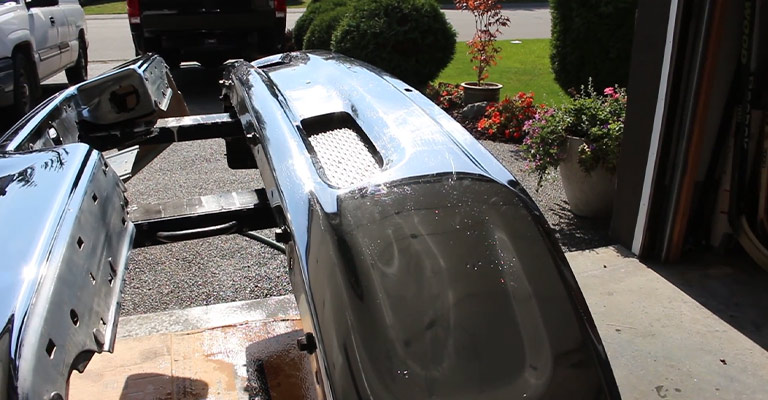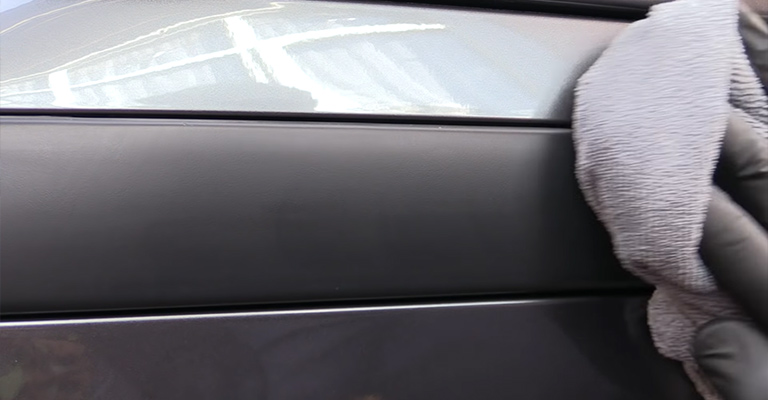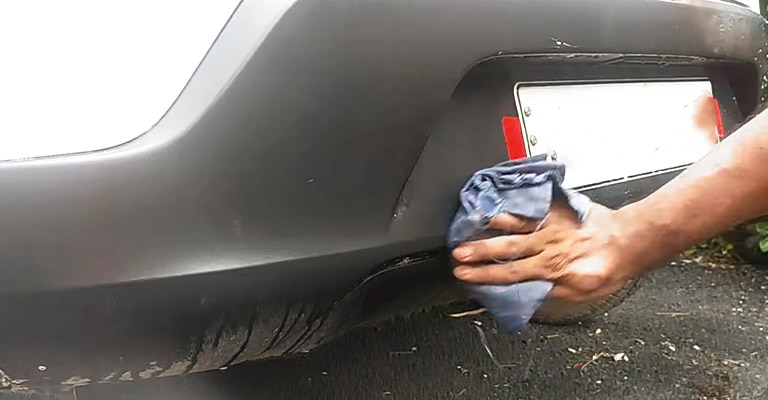A thin layer of chromium is electroplated onto a metal object during chrome plating. This type of plating is also known as chromium plating. Chrome is the result of chrome plating.
Objects with this coating appear shiny and silver. Polished aluminum, for example, can have similar shiny finishes, but chrome plating usually has a brighter and more mirror-like appearance, resulting in more accurate reflections.
Chrome plating usually protects metals from corrosion and increases their durability. The chrome coat is, however, susceptible to wear and tear from extended use, as are most other surface treatments.
As a result, it becomes crucial to know how to remove chrome plating from plastics and how to strip chrome coats from metals.
How To Remove Chrome From A Bumper?
If you want to remove the chrome, you have several options, some of which use common everyday materials and others that use highly toxic chemical solutions. Whichever method you choose, make sure you observe all safety precautions.
Ultrasonic Cleaning
There is a rich history of using these cleaners on jewelry. The main reason for this might be their ability to remove very delicate materials without causing damage to them.
Chrome can be easily removed with this specialized cleaner. Sound waves are used to remove chrome plating from metals using ultrasonic cleaners.
An ultrasonic cleaner basket is filled with a cleaner solution to clean chrome-plated materials. There is a reputation for ultrasonic cleaners being able to remove chrome from relatively small materials that are resistant to other methods of removing it.
The Use Of An Abrasive Blaster
Sandblasting is another term for abrasive blasting, in which tiny pellets are sprayed on chrome materials to abrade them. Abrasive blasters are tools that help with abrasive blasting.

Many auto shops use these blasters to remove chrome plating from metals in automobiles since they remove chrome completely.
Protective gear, such as goggles and masks, is one precaution in this process. When very fine pieces of dust and debris are released into the air, they can cause irritation and toxic effects on the eyes and lungs.
Clean the object with soap and water
Clean the bumper with soap and water to remove any dirt or grease. Wipe down the chrome with a cloth soaked in rubbing alcohol. Use a polishing pad on a hard surface to polish off any scratches or blemishes from the cleaning process.

Reapply your new chrome bumper sticker after it has been completely dry.
Remove chrome plating
Use a chrome cleaner to remove the plating from your bumper. Be sure to use gloves and avoid getting any of the cleaners on your paint or bodywork. Clean with warm, soapy water and then rinse off well with a soft cloth or paper towel before drying completely.

Apply an anti-glare coating if desired, following cleaning instructions from the manufacturer of your vehicle’s finish. You may need to repeat this process several times for stubborn areas until all chrome is removed.
Wash in soapy water and rinse
If the chrome bumper is severely tarnished or worn, it may be necessary to remove it completely. Wash the bumper in soapy water and rinse thoroughly. Use a stiff brush to loosen any built-up dirt and debris on the surface of the chrome bumpers before washing them again with soap and water.

Pour a small amount of rubbing alcohol onto a cloth and wipe down all sides of the bumper until it shines clean again- like new. Ensure not to use harsh cleaners or steel wool when cleaning your chrome bumpers; these could damage them over time.
Can I sandblast the chrome off?
Sandblasting is the safest and easiest option if you want to remove chrome from an object. You’ll need some sandpaper, a mask, and safety goggles in order to complete the job properly.
Make sure the area you’re working in is clean before starting – any dirt or grease will obstruct your vision and make the process harder. Apply pressure while sanding to keep flying grains of sand from building up on the surface – this will help prevent damage done to the chrome itself.
Be patient – it may take a few tries to get satisfying results.
Does acetone remove chrome plating?
Acetone is a powerful solvent that can remove chrome plating from metal surfaces. You’ll need to scrub it well with a clean cloth or sandpaper for best results, as acetone isn’t the best choice for removing paint or other tough stains.
It’s safe to use acetone on chrome surfaces, but you’ll need to be careful not to damage the surface further while using it. Be aware that acetone doesn’t work very well on delicate finishes such as lacquer or varnish, so test an inconspicuous area before applying it in larger quantities.
Can I paint over the chrome?
While chrome can be a beautiful addition to any room, it may not be the best choice for every surface. To keep your chrome looking its best, sand and prime it first.
If you want to paint over your chrome, use a protective coating such as paint or sealant first. Once the finish is applied, remove any residual paint with acetone or polish; chrome will resist most chemicals and polishes.
Consider using sandpaper before priming and painting to remove built-up residue for a sparklingly clean look that will last year after year.
Can you strip the chrome off the plastic?
If you want to strip the chrome off of plastic, you will need hydrochloric acid and water. Dip the metal in the solution to remove the chrome, then rinse it carefully. Finally, dry it well before storing it away.
Removing the trunk liner will give you access to the inside. You’ll find something there to paint too.
To Recap
There are a few different ways to remove chrome from bumpers, but the most effective method is probably using a degreaser. You can also use baking soda and water or a power scrubber.

Leave a Reply